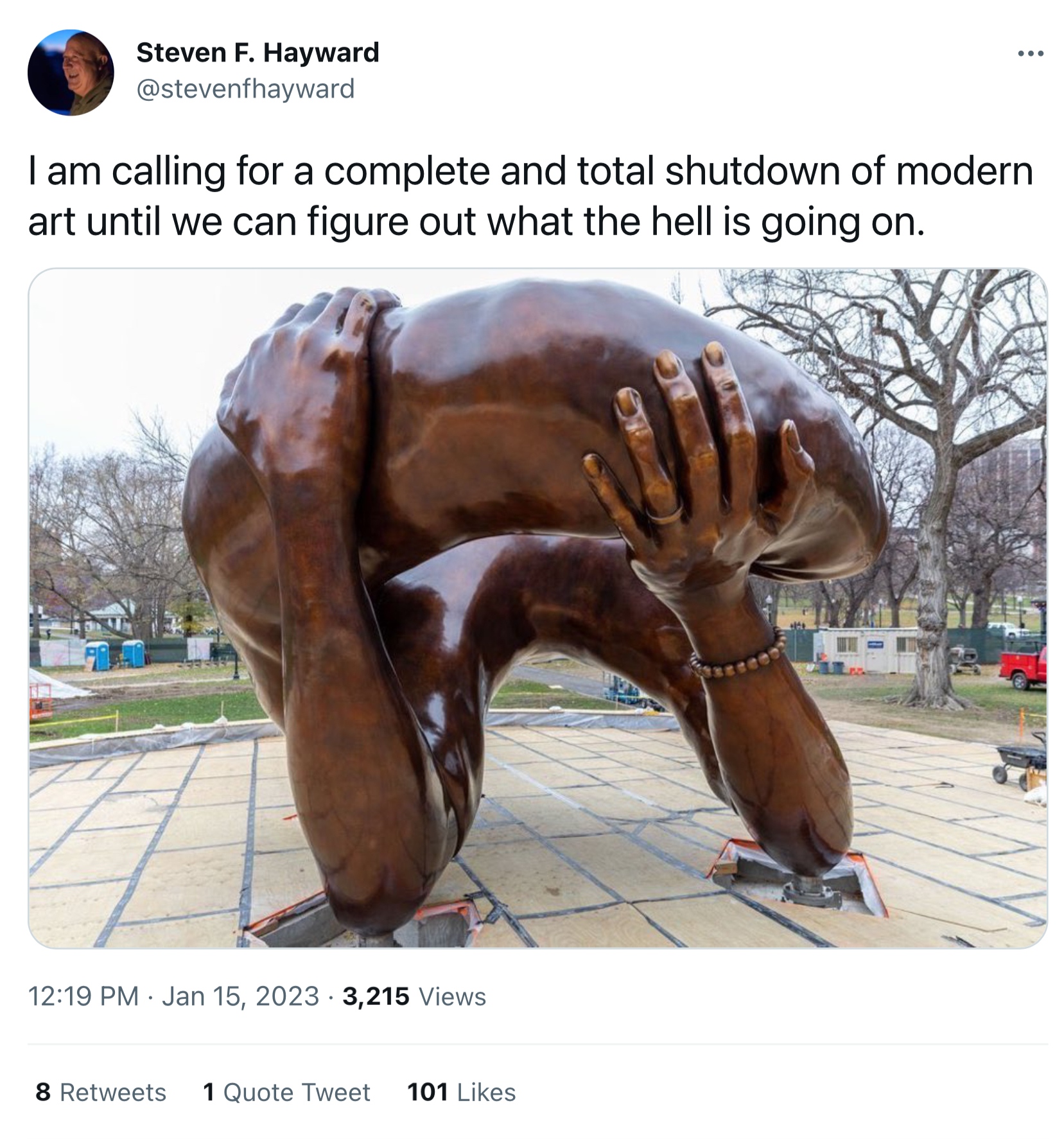SENECA SCOTT: A Masturbatory ‘Homage’ to My Family.
By now, I’m sure you’ve seen it. The new Boston sculpture “honoring” Dr. Martin Luther King and his wife, Coretta Scott King, looks more like a pair of hands hugging a beefy penis than a special moment shared by the iconic couple. Created by the organization Embrace Boston, the sculpture has inspired mad jokes on Twitter, and rightly so. But for my family, it’s rather insulting. You see, Coretta was my first cousin, my grandfather’s niece, and the daughter of my great uncle Obediah Scott.
Martin married up. Coretta came from a distinguished family, with a significant legacy in her own right. There is a reason she kept the Scott name. We were a black family that owned land, lots of it. Martin knew what he was doing when he pursued her, signaling intentions to marry from the outset. After his assassination, Coretta created a legacy of her own, fighting for health-care workers and against Apartheid in South Africa.
“The Boston debacle … exposes the insidiousness of astroturfed woke movements.”
In his 2002 review of C.P. Snow’s 1959 book, The Two Cultures and the Scientific Revolution, Orrin Judd of the Brothers Judd blog wrote:
As Snow notes, as late as say the 1850s, any reasonably well-educated, well-read, inquisitive man could speak knowledgeably about both science and the arts. Man knew little enough that it was still possible for one to know nearly everything that was known and to have been exposed to all the religion, art, history–culture in general–that mattered. But then with the pure science revolution of which Snow spoke–in biology and chemistry, but most of all in physics–suddenly a great deal of specialized training and education was necessary before one could be knowledgeable in each field. Like priests of some ancient cult, scientists were separated out from the mass of men, elevated above them by their access to secret knowledge. Even more annoying was the fact that even though they had moved beyond what the rest of us could readily understand, they could still listen to Bach or read Shakespeare and discuss it intelligently. The reaction of their peers in the arts, or those who had been their peers, was to make their own fields of expertise as obscure as possible. If Picasso couldn’t understand particle physics, he sure as hell wasn’t going to paint anything comprehensible, and if Joyce couldn’t pick up a scientific journal and read it, then no one was going to be able to read his books either. And so grew the two cultures, the one real, the other manufactured, but both with elaborate and often counterintuitive theories, requiring years of study.
And thus we we end up with the formulation of Tom Wolfe’s 1975 book, The Painted Word, where modern art exists almost solely to justify the theory behind it, and as Wolfe wrote, “In short: frankly, these days, without a theory to go with it, I can’t see a painting.”
Or a modernist sculpture — although sadly, there’s no unseeing “the Boston debacle:”

